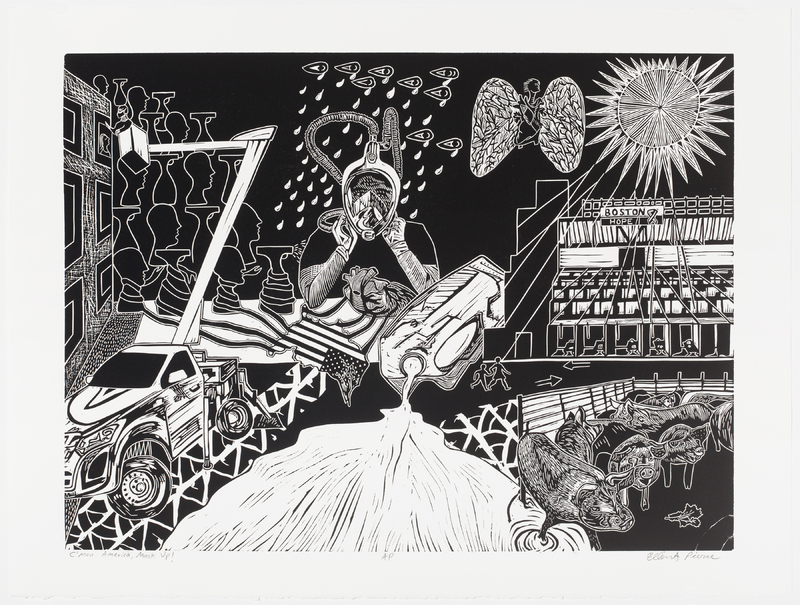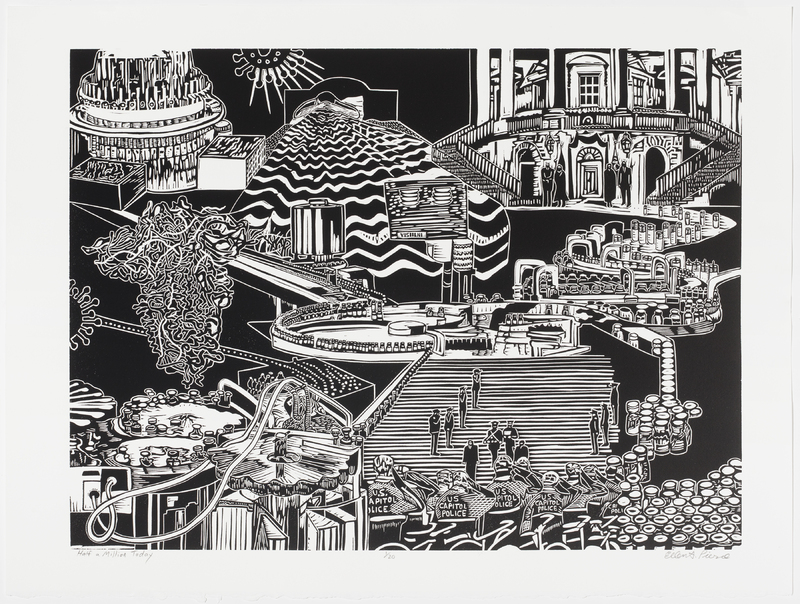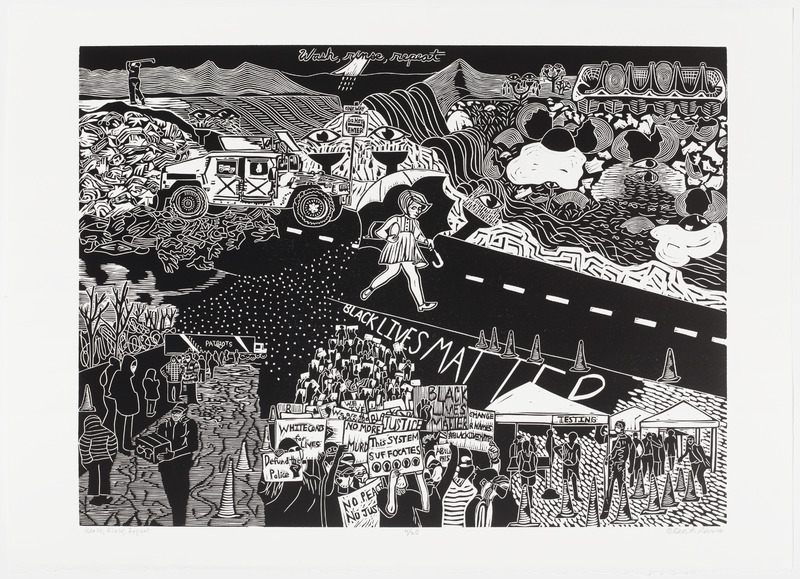Covid Chronicles 7
Linoleum is a sketchbook for me, a meditative place. Making a linocut allows me to slowly carve lines that are very certain in this uncertain time. Since March 16th 2020, I have created imagery related to the Covid pandemic, resulting in the Covid Chronicles, a series of sixteen relief carvings. The carvings, each measuring 18” by 24” , chronicle my experience of the Covid19 pandemic in Boston, Massachusetts and its wider impact in the United States. In this brief essay, I will explain how the making of Covid Chronicles pushed my printmaking to be a social practice and source of healing.
As a mother and a public school art teacher I have had a window through which to view the pandemic’s effect on families’ lives. With the pivot to online teaching, I zoomed into two hundred and thirty homes to teach art to kindergarteners through fifth graders. Making the linocuts gave me some sense of agency. By recording the pain, anxiety and grief I witnessed, I aimed to escape despair and make sense of the chaos.
Nearing what we are starting to hope will be the end of the pandemic, the series serves as a remembrance and a validation of our shared experience. Additionally, it can be read as a cautionary tale of what we hope not to repeat when the United States faces its next pandemic.









